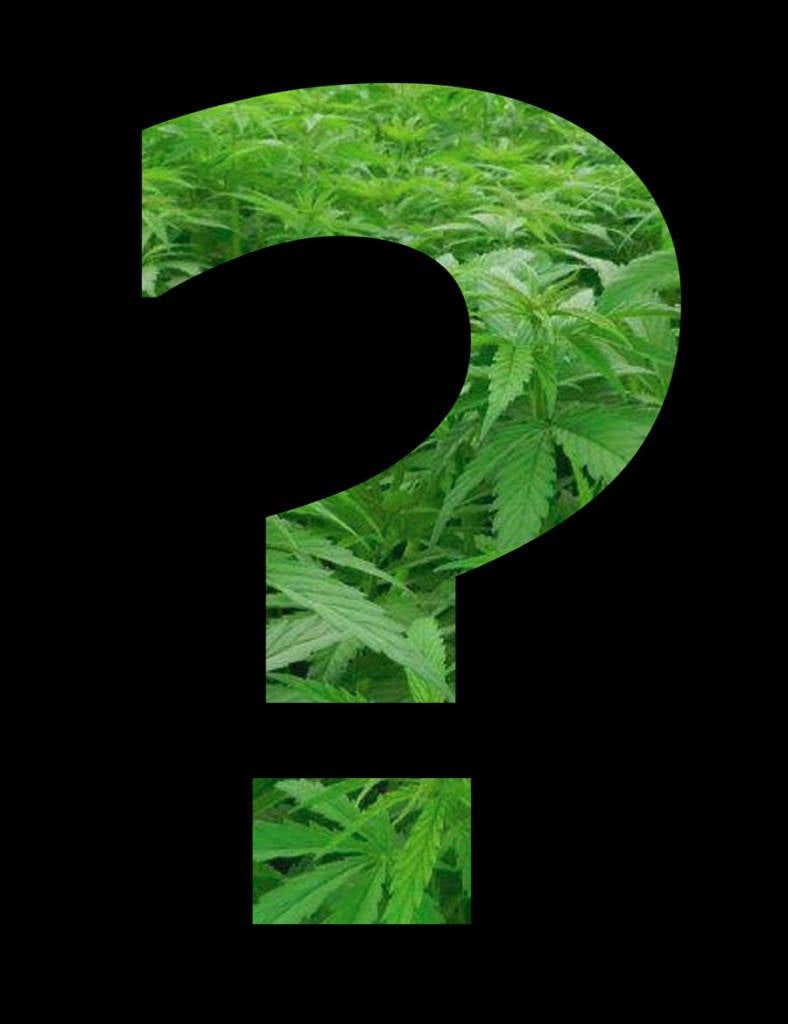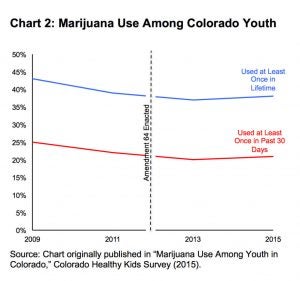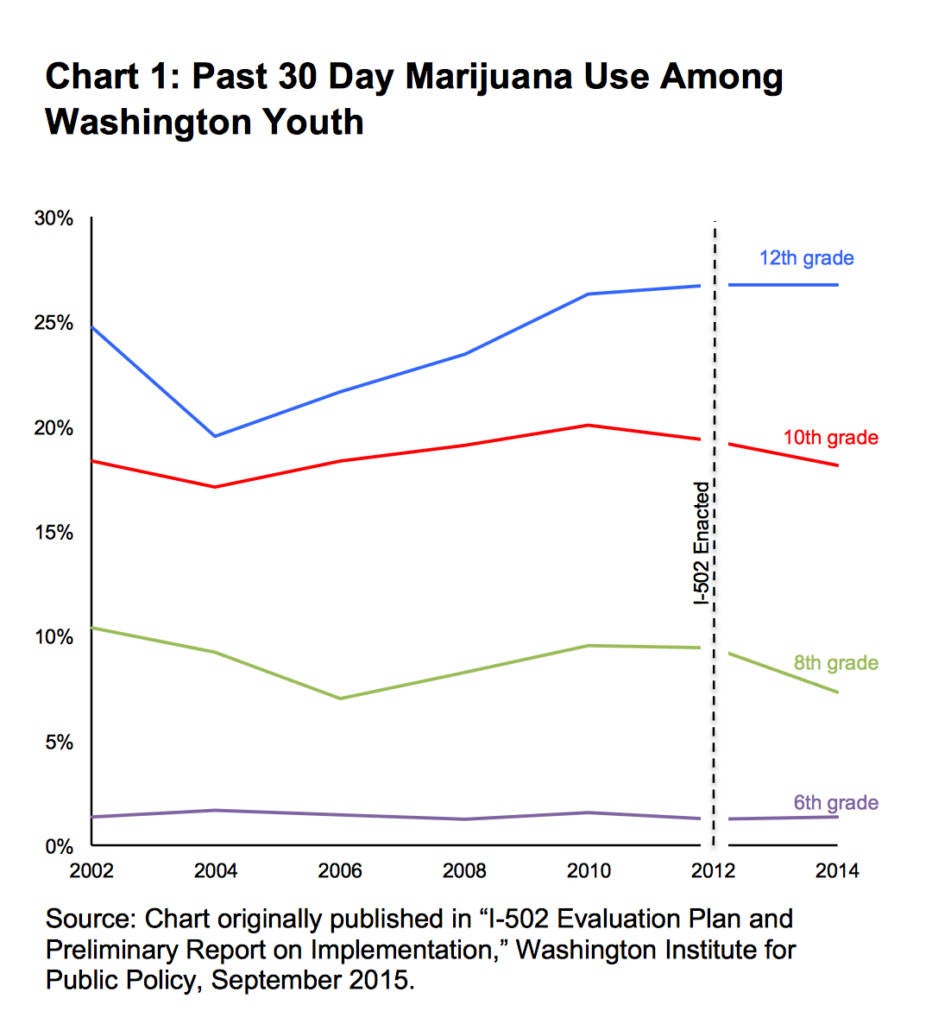 A few weeks ago I wrote a blog post about what the results of the cannabis ballot initiatives could mean for legalization in the U.S.. I mentioned that although four new states legalized cannabis for personal use, it will be a couple of years until we see these fully implementing their regulated markets. However, while we wait for those state’s to join California, Washington, Oregon, Alaska and DC, we have a lot of information to analyze how legalization is looking so far. All these numbers will also help shape any new state’s model to come, trying to fill gaps or improve problems that may arise.
A few weeks ago I wrote a blog post about what the results of the cannabis ballot initiatives could mean for legalization in the U.S.. I mentioned that although four new states legalized cannabis for personal use, it will be a couple of years until we see these fully implementing their regulated markets. However, while we wait for those state’s to join California, Washington, Oregon, Alaska and DC, we have a lot of information to analyze how legalization is looking so far. All these numbers will also help shape any new state’s model to come, trying to fill gaps or improve problems that may arise.
In October, the Drug Policy Alliance released a report detailing what we know so far about cannabis legalization in the states that are already up and running. While it is still too early to make any definite conclusions, preliminary reports suggest that the effects of legalization have been either positive or negligible. The report focuses on four main areas: youth use, arrests, road safety and tax revenues. Here are some of the biggest findings.
Youth Use
According to the 2015 Monitoring the Future Survey, a nationwide study that surveys over 40,000 students in grades 8, 10, and 12 each year, since 2010, the annual prevalence of youth marijuana use has leveled out after rising for several years. These numbers are closely in line with those from state’s were legalization occurred first. In Washington, the Washington Healthy Youth Survey, administered to a representative sample of Washington students in 6th, 8th, 10th and 12th grade, found that there were no significant changes in trends in youth use between 2002 and 2014. Similarly, the 2015 Healthy Kids Colorado Survey, a large survey of middle and high-school students in Colorado found that use has remained stable. 

Cannabis Arrests
Arrests in all states and Washington, D.C. for the possession, cultivation and distribution of marijuana have dropped significantly since legalization. Apart from saving thousands from criminalization and incarceration, this has resulted in substantial savings for law enforcement and the judiciary. For example, as set out in the report, Washington spent over $200 million on marijuana enforcement between 2000 and 2010. The state can now save the majority of this amount by no longer arresting and prosecuting possession and other low-level marijuana offenses. Here are what the numbers look like across the states:
- In Colorado, the total number of marijuana arrests decreased by 46% between 2012 and 2014, from 12,894 to 7,004
- The total number of low-level marijuana court filings in Washington fell by 98%
- In DC marijuana arrests decreased 85% from 2014 to 2015, with possession arrests falling by 98% from 1,840 in 2014 to 32 in
2015 - Marijuana charges and arrests in Alaska decreased by 59% between 2013 and 2015 even though retail sales of marijuana have not yet begun
- Marijuana arrests in Oregon declined by 50% from 2011 to 2014.
A concern in relation to arrests is the remaining huge racial disparity. According to the Bureau of Justice Statistics, nearly 80% of people in federal prison and almost 60% of people in state prison for drug offenses are black or Latino. So while initial data from Colorado and Washington shows that legalization substantially reduces the total number of blacks or Latinos arrested for cannabis offenses, it does not eliminate the disparities. A recent report found that in both of these states, the post-legalization arrest rates for blacks was double the arrest rest for other races and ethnicities. In DC, out of the 128 arrests for consuming cannabis in public in 2015, 108 were of black people.
Road Safety
The way to measure cannabis impairment remains a big challenge. Currently, there is no way to measure cannabis levels in the same way as we do alcohol, as cannabis may remain in someone’s system up to two weeks after use. Tests for THC concentration in the blood only show whether a driver has used marijuana within the past few hours, days or weeks; they do not objectively establish whether the driver is impaired and unsafe to drive. So although it is unlawful to drive while impaired by cannabis in the four states and DC, how a state defines or sets limits on impairment varies.Washington and Colorado rely on blood test to determine the concentration of THC (with a legal threshold of 5 nanograms of THC per milliliter of blood), while the other three states all rely on trained observations of police officers to determine the impairment. Considering the disparities faced in cannabis arrests, this could result in additional problems if law enforcement is not prosecuting with objective tools, but rather through their own personal criteria.
In more positive news, the total number of arrests for driving under the influence (including both alcohol and other drugs), has decreased in both Colorado and Washington. Out of the DUI arrests that did occur, very few involved cannabis, with 8% of DUIs in Colorado involving cannabis and 4% in Washington. In both of these states, the post-legalization traffic fatality rate has also remained consistent with pre-legalization levels and is lower than in the previous decade as well as being below the national rate.
Tax Revenues
Tax revenues in Colorado, Washington, and Oregon have all exceeded initial revenue estimates, totaling $552 million. While revenue collection began slowly during the first year of retail sales – as state and local governments and consumers became familiar with the new system – revenue exceeded initial estimates by the second year. The states are all using revenue for slightly different things. In Colorado, these revenues fund school construction, marijuana enforcement and general state needs. Recently, Governor John Hickenlooper, Jr. is making the case that housing and homeless services be added to that list, arguing that it’s a social issue that’s been exacerbated by legalization. In his 2017-18 budget request, Hickenlooper asked state lawmakers to allocate roughly $12-million of annual cannabis tax revenue to building new housing units for homeless residents. The governor also requested $4-million be allocated annually to house people with behavioral health needs. In Washington the tax revenue is used to fund substance abuse prevention and treatment programs, youth and adult drug education, community health care services, and academic research and evaluation on the effects of marijuana legalization.
New state initiatives taking disparities more seriously
While social injustice and racial disparities were not necessarily big selling points in initial legalization initiatives in Colorado and Washington, we are seeing a new direction in the new initiatives that passed on November 8th. Experts are currently calling California’s Prop. 64 the “new gold standard” for marijuana policy because of its cutting edge provisions to undo the most egregious harms of cannabis prohibition on impacted communities of color and the environment as well as its thought out approaches to public health. Similarly to Colorado and Washington, a 15% excise tax on cannabis sales and a cultivation tax will be used to pay for the regulatory structure. Additional revenue will go toward youth substance abuse prevention, medical cannabis research, environmental protection and remediation, and local governments. The initiative also allocates substantial resources toward economic development and job placement for neighborhoods most in need. Prop. 64 eliminates most marijuana offenses, proactively and retroactively, only maintaining sales to a minor, transfer across state lines, growing on public lands, and home butane extraction as felony offenses. This is going to vastly reduce the hundreds of thousands of people caught up in California’s criminal justice system every year. Additionally, it will allow those most affected by prohibition to be part of this new industry. The initiative does not allow large-scale cultivation for the first five years, so small farmers have an advantage and a prior conviction for possession, possession for sale, sale, manufacturing, transportation, or cultivation of any controlled substance shall not be the sole basis for the denial of a license.
Massachusetts is following similar steps. The new law provides support for communities disproportionately harmed by the drug war, by requiring the new regulating agency to adopt procedures and policies to promote and encourage full participation in the cannabis industry by people from communities that have previously been disproportionately harmed by prohibition and enforcement. It also requires the agency to develop policies to positively impact those communities, such as education, job training, and placement programs. The law also states that a prior conviction solely for a cannabis-related offense will not disqualify an individual from being employed in the newly legal marijuana industry or from getting a license to operate a cannabis business, unless the offense involved distribution to a minor.
All this for naught?
As I mentioned in my post, what happens in terms of legalization will depend very much on who Donald Trump’s pick for Attorney General is. On November 18th, the President-Elect picked Senator Jeff Sessions for this role. Sessions is the biggest threat to legalization out of the possible contenders. As set out by Politico and the Drug Policy Alliance, Sessions has a long and antagonistic attitude toward marijuana, recently saying in a Senate hearing that “good people don’t smoke marijuana”. Sessions is also a proponent of harsh sentences for drug offenses, going as far as to be the chief opponent of recent bipartisan efforts to reduce sentences for drug offenses, stating that “this proposal would provide for leniency for illegal alien drug traffickers,” and voting against the bill in the Judiciary Committee. While he has not shared his plans on cannabis enforcement, his track record of opposition to cannabis reform is clear. If he chooses, he will be able to act decisively and quickly, undoing the Cole Memo and much of what has been done in the last decade. By doing this, he could block state cannabis programs, going as far as to arrest growers, retailers and users in state’s that have set up legal markets. Everything is still very much up in the air and we will need to wait to see what happens in the coming months. Stay tuned…



